Existing User Log In
New User Registration
Register for a free account to gain full access to the VGChartz Network and join our thriving community.



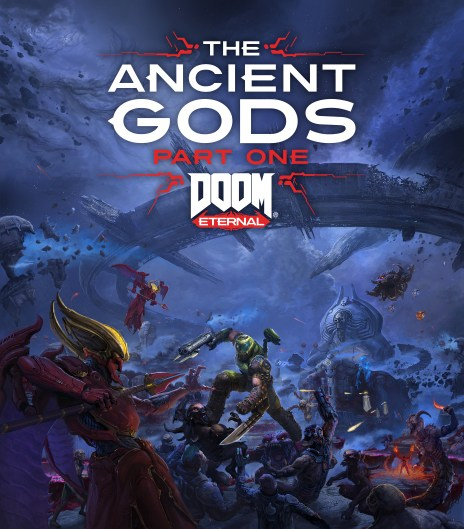

America - Front
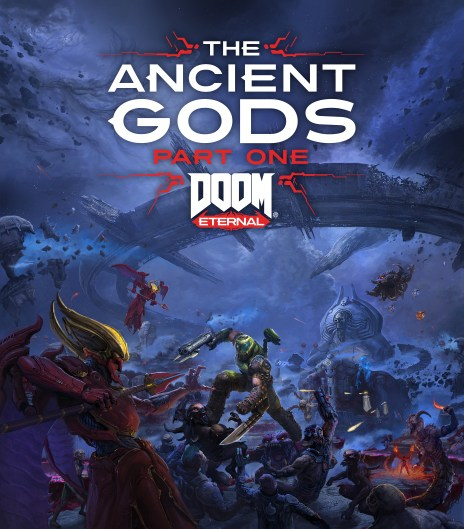

America - Back

id Software
Shooter
 (Add Date)
(Add Date) (Add Date)
(Add Date) (Add Date)
(Add Date)
| Owners: | 0 |
| Favorite: | 0 |
| Tracked: | 0 |
| Wishlist: | 0 |
| Now Playing: | 0 |
The Ancient Gods - Part One is something of a first for the Doom series, as despite prior games receiving bits and pieces of DLC, the series has never really had a standalone campaign expansion in the past. That all changes with Id Software’s latest offering, which puts players back into the boots of the Doom Slayer and sets them in a post-Doom Eternal story. Unfortunately, said boots probably could have stood to be polished for just a bit longer.
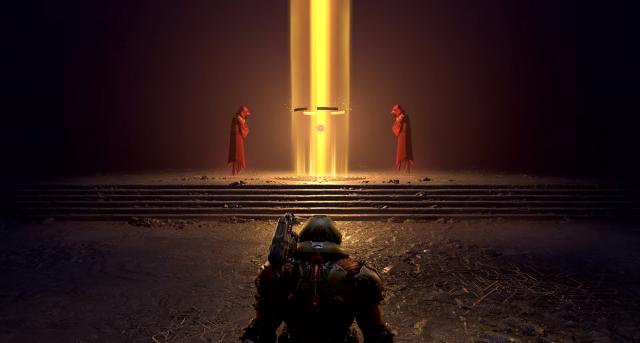
Aesthetically, pretty much everything mentioned in the review of Doom Eternal game applies here. Ancient Gods looks and has the same presentation as the base game (unsurprisingly, as it’s DLC), and graphically the environments feel very similar to the base title as well. Sound design has remained pretty consistent too, which is perhaps especially impressive given the departure of the immensely talented Mick Gordon. Despite relying on new composers, the music still manages to capture the frenetic feel and pace of the combat.
Like the main campaign in Eternal, Ancient Gods is a lot pushier about having its story be more relevant than Doom (2016)'s. Ancient Gods’ story takes place after the ending of Doom Eternal’s campaign and sees the Slayer enlisting the help of an entity known as the Seraphim to reclaim a realm from the demons, but to do so he needs acquire the Father’s life sphere and then also a dark sphere and... yeah, it becomes incomprehensible pretty quickly unless you’re actively familiar with previous Doom lore. I still don’t quite understand why id Software is so determined to make the backstory for Doom front and center now, but whatever, it doesn’t get in the way of the moment to moment gameplay too much.
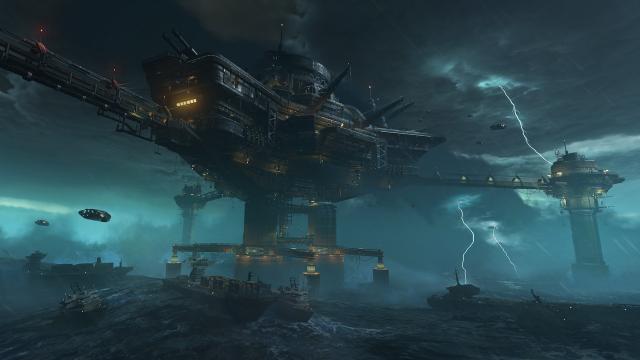
As expected of an expansion, Ancient Gods plays pretty much exactly like Doom Eternal. You start off with maxed out upgrades and abilities from the base game, and the vast majority of enemies return as well. Where Ancient Gods tries to differentiate itself from the main campaign is in how it structures its combat scenarios. Leading up to the DLC’s release, the developers repeatedly noted how they were trying to restructure combat and enemy wave design in order to challenge the player.
And, for the most part, they succeeded on this front. Ancient Gods is certainly a step up in difficulty from base Eternal. Sometimes, this is handled quite well, with enemy wave layouts we didn’t get to see in the original game that force the player to think about how to approach certain scenarios. When Ancient Gods is at its best, the same fast paced, high octane combat from the main campaign is on full display, only kicked up to 11 as virtually every encounter features enemies from Eternal’s late game.
That said, the inclusion of tougher enemies earlier on is a double edged sword. By roughly the mid-point of the first mission, the game has thrown every single standard enemy that was present in the base game at the player. The vast majority of fights have three or more waves, each wave generally built around cramming at least a couple of tougher enemies into the mix. But there are only so many ways enemy waves can be remixed, and The Ancient Gods’ inability to pace itself means that encounters eventually start to feel rather stale and repetitive.
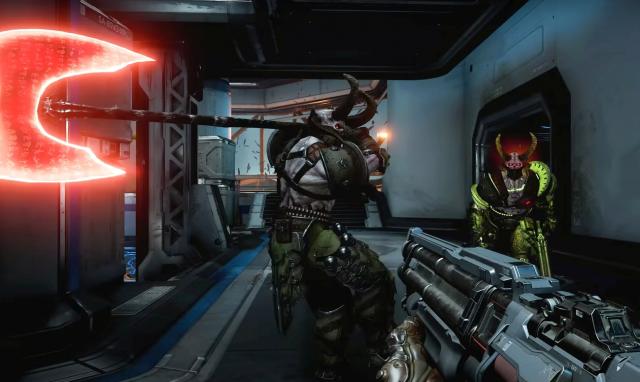
Unfortunately, this is only the beginning of Ancient Gods’ flaws. The DLC also has a tendency to try and achieve difficulty by doubling down on some of the worst parts of Eternal. If you didn’t enjoy the Marauder enemy in the base game, this is not the DLC for you, as they are back and prevalent to an almost comical degree. Buff totems are back and widely present as well, which again just slams the breaks on any combat scenario that they’re present in, and turns Ancient Gods into a game of hide and seek while you frantically search around the arena. Invisible enemies show up more frequently than in the base game too, and still just feel like a cheap way to get an easy hit on you in the midst of a crowded fray as before.
The most frustrating part of Ancient Gods, however, is the mistakes it makes in adding new elements. Level design is a particularly egregious example. Both Doom 2016 and Doom Eternal designed their combat with open-ended areas and expansive movement in mind. Environments were built to have a multitude of ways to traverse them so that players were encouraged to consistently move around to avoid enemies. Fast paced movement and constant decision making were at the forefront of each and every battle.
Ancient Gods, meanwhile, rejects that notion from the outset. The first mission places a sizable chunk of its battles in tight, cramped corridors, which makes battles far less interesting and engaging. The second mission puts the player in a swamp land with obscured vision and consistent environmental hazards, making moving around a dangerous proposition in and of itself and forcing the player to fly blind, so to speak, for any combat encounter they’re in. The final mission has similarly egregious issues. These problems don’t always stop things from being enjoyable, but they do heavily detract from the fun factor and make most of Ancient Gods’ gameplay a lot less enjoyable on a moment to moment level.
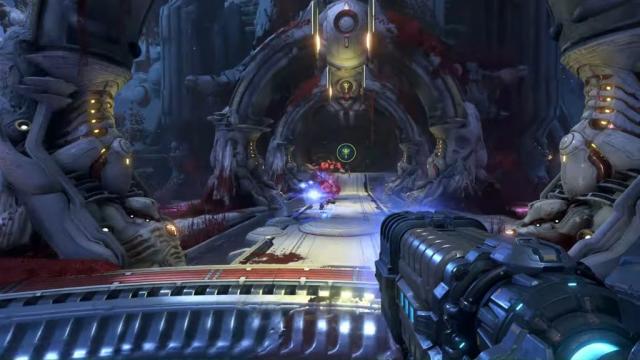
The other area where Ancient Gods attempts to introduce new content and stumbles is with the few types of new enemies that are on display. These range from tolerable enough to downright obnoxious. Somehow id concluded between the development of the base game and the DLC that the best way to design enemies for a fast-paced movement shooter was to have them pop in and out of cover, and as a result we have a few different enemy varieties that only become vulnerable when they attack you.
One other new inclusion is the Phantom enemy, which isn’t really so much a new enemy as it is an excuse to buff already existing enemies. Phantoms will possess certain enemy types and buff them to a significant degree, becoming much tougher and allowing them to ignore certain status effects like freezing. Upon death, the player has to awkwardly come to a near standstill and suck them up like they’re playing Luigi’s Mansion, otherwise the Phantom will go and possess something else. If this sounds like a not particularly enjoyable enemy for a movement shooter, then you’d be right, and so of course it comes back bigger and badder than ever for the last phase of the final boss.
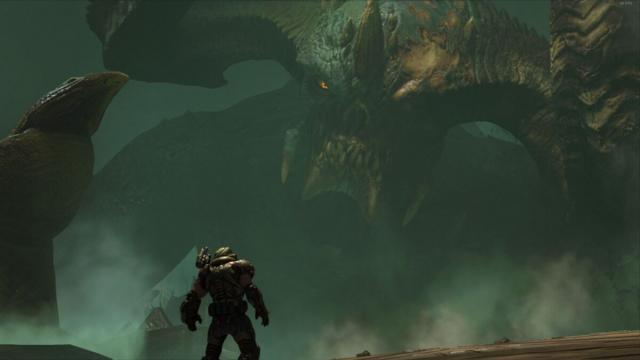
This brings us to the crux of the issue, which is that while Ancient Gods achieves its goal of higher difficulty, that emphasis may have been to the detriment of the overall product. Challenge is often an important part of why a game is enjoyable; part of the reason why vanilla Doom Eternal is a great experience is how its challenge pushes players to learn a complex combat system and make use of all the different tools at their disposal. In other words, challenge is a means to an end; difficulty encourages players to try out new things and have more fun than if they were to just use the same option.
Ancient Gods, however, inverts this perspective and seems to treat challenge as the end goal. Rather than using challenge as a way to encourage players to experiment with its combat and ultimately expand their options, it often falls back on annoying gimmicks and gameplay design to limit players' options and thus increase the difficulty. Challenge does not make a game good by itself, especially when it's achieved in this manner, and between some trends present in Eternal and now to a much greater extent in this DLC, I’m worried that id has fully bought into this concept of difficulty as a goal rather than a means to an end.
Bear in mind that not all of Ancient Gods falls back on this. Some early encounters certainly embody what I’d posit this DLC primarily should have been: taking the general concepts of unfettered movement, quick gun switching, and on-the-fly decision making, and throwing the player into more open ended areas with lots of baddies to shoot. There are still bits and pieces of Ancient Gods that I quite liked, plenty of areas that handed me more than a few game overs on Ultra Violence while still being fun, but it feels like there are also far more places where it falls short.
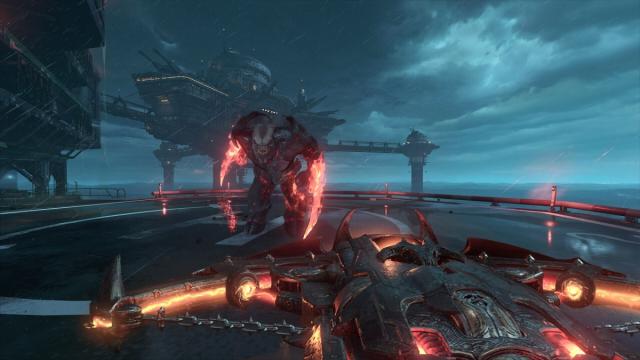
Ultimately, it's difficult to recommend The Ancient Gods - Part One for anyone but the most diehard Eternal fan. It doesn’t introduce any substantial new content that you desperately need to experience if future DLCs do wind up being worthwhile, nor will the story make any amount of sense if you’re not invested enough in the series to the point where it’s probably still worth playing anyway. There are sparks of the greatness embodied in Eternal, but there are too many places where this DLC stumbles for it to be worth your time, especially in the midst of a very busy fall season.









